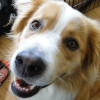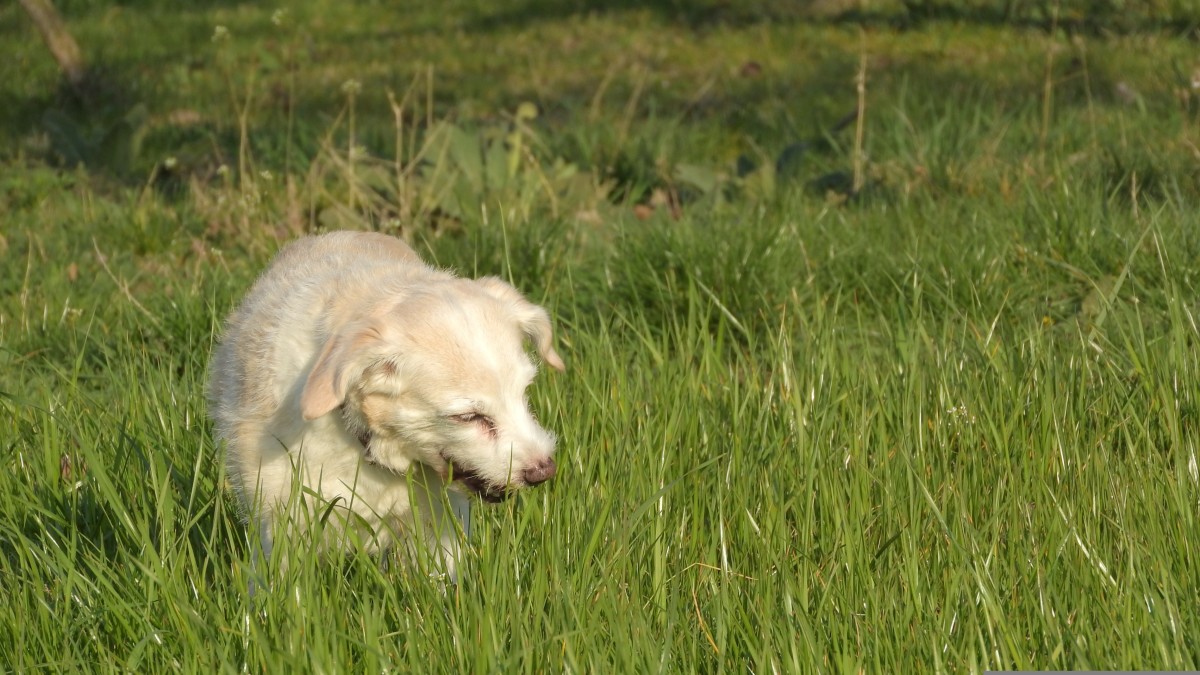Dog language : Calming signals
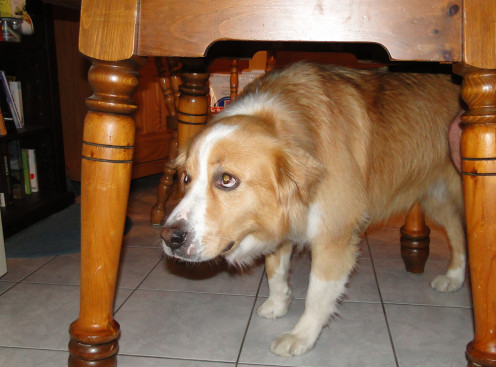
Calming Signals in Dogs
Have you ever heard about calming signals? That's O.K. if you didn't, it isn't very popular yet. But if people would know more about these, a lot of bite or aggression accidents could be prevented.
What are calming signals?
Calming signals are ways for dogs to tell us, or other dogs, that they aren't comfortable in a situation. It could be that they don't like you to be so close to them, or they don't know the other dog and are a little nervous about it, or they don't like to be handled, etc. These are also ways to say: "I don't want any trouble!"
When do they use them?
They can be seen when two stranger dogs meet each other, or when a dog meets a new human, or when a dog is tired to play, or even sometimes when you pet him.
It is easy to observe calming signals when going to the dog park. They make a lot of signals there since they meet several new dogs. You can also observe calming signals when young kids play with a dog and pull their hair and cheeks.
What are those signals?
There are several signals that can be used, but here are the most common ones you probably will observe:
- Nose licks
- Yawn (not the same as the tiredness yawn)
- Turn the head away
- Turn the body away
- Look away
- Blink
- Sit
- Lay down
- Bow (as in a play position)
- Immobilization
- Moving slowly
- Sniffing on the ground (it's a fake sniffing)
- Approaching in a half circle
- Growling
- Whale eye (this is when you can see the white part of the eye)
Those are the main ones, but there are others that you can notice when you take the time to observe dogs interacting with each other.
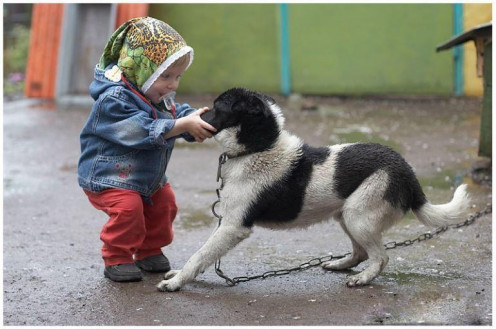
Why is this important to know?
This is how they communicate, and this is a great way to know how your dog is feeling, but also, it is a way to communicate with him. Humans can do some of the signals like the licking, yawning, turning the head and body away, blinking, immobilizing etc.
If you ignore those messages that your dog is trying to communicate with you, then he might need to escalate to a growl or even a bite to pass the message. If the dog is cornered for example, and is very scared, you will be able to observe probably several calming signals in no time. If you don't back up and continue to approach him, he might then start to growl as a warning. He's telling you: "Please, stop, I'm scared and I don't want any trouble!" If you still don't listen to him and keep on getting closer, then he might bite you. This is the final warning. He had no choice, he felt threatened and had to protect himself.
Another situation where it is very important to understand their language is with kids. If you have a kid pulling Fido's hair, climbing on him, pulling his cheeks, it might look really cute at first. And your dog might seem like he is very patient since he doesn't growl or anything. But most of the time, parents won't see all the calming signals that are made, and there are probably a lot of them like blinking, yawning, nose licking, looking away, etc. If the parents don't tell the kid to stop, we don't know what is the patience limit of the dog. We never know when he might decide that it is enough and bite. It is our job to listen to our dog and teach our kids to respect their limits and intimacy. Dogs are like us, they don't always want to play and might want to spend some time alone and rest. If we don't listen to them, then an accident could happen.
Often, when a dog bite a kid, or even an adult, they will say they didn't see it coming, that the dog has never bit before. What they don't know though is that their pet were telling them all that time that they didn't like it. And then one day, they decide it's enough.
What do we do when we observe calming signals?
Try to identify why they aren't comfortable. Maybe he doesn't like to be touched, maybe he doesn't like the other dog sniffing at him, maybe there is a cat looking at him, maybe you are punishing him. Try analyzing the situation to see what can cause the discomfort and stop it.
It is safer to stop what we are doing when we see the signals than to continue and risking that it escalates. We can then analyze and find ways to approach the situation differently.
Why you should NEVER punish a growl.
Growling is a calming signal, and it is an important one. It is a warning, and it is the one right before a bite occurs. If you punish a growl, then maybe the next time your dog will chose to skip the growl and go directly for a bite, since the growl didn't work the last time (has been punished). You absolutely want to know when your dog might bite, so you want to keep the growl as the warning. Growling isn't bad if you listen to your dog. He is warning you that he really doesn't like the situation. So stop what you are doing and try approaching the situation differently.
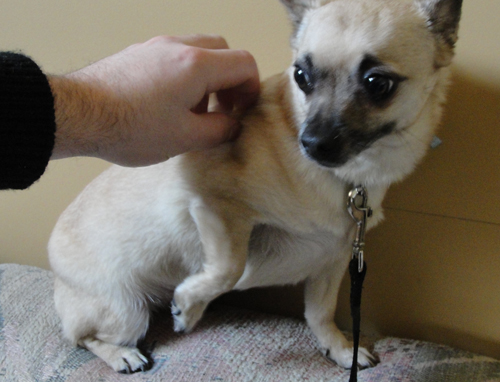
Conclusion
Everyone should know about calming signals. It is very important to prevent bite accidents, especially with kids.
Those signals are easy to learn. Go to a dog park, or observe your own dog and try to identify all the signals that they are making. They are also videos on the subject on the internet. If you see your dog doing some nose lickings or yawning, this isn't necessarily a bad thing. Sometimes, they just want you to know that they are friendly and don't want any trouble.
Have you ever noticed a cat doing some slow blinks or rapid nose licks? Dogs aren't the only one to use those signals. Humans can do it too! Try blinking slowly to a cat, they will probably blink back.
I once noticed that I was yawning excessively in the bus on my way home, and noticed those weren't because I was tired, but I was very uncomfortable. I realized I was making calming signals too!
Isn't that interesting?
Did you already know about calming signals?
© 2014 Anne-Marie
